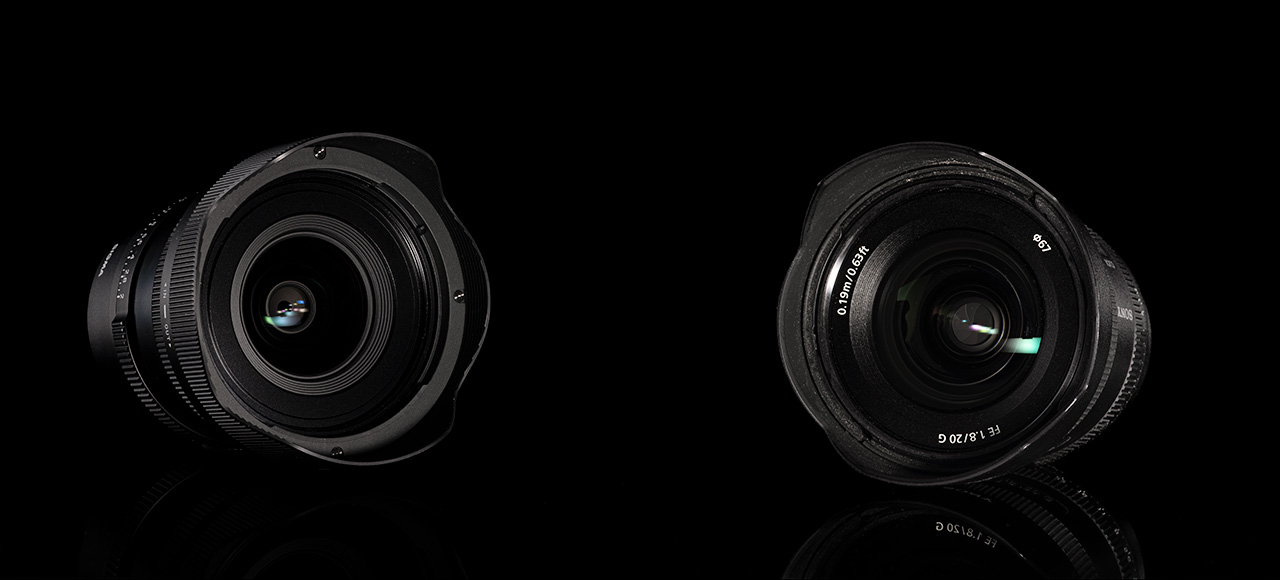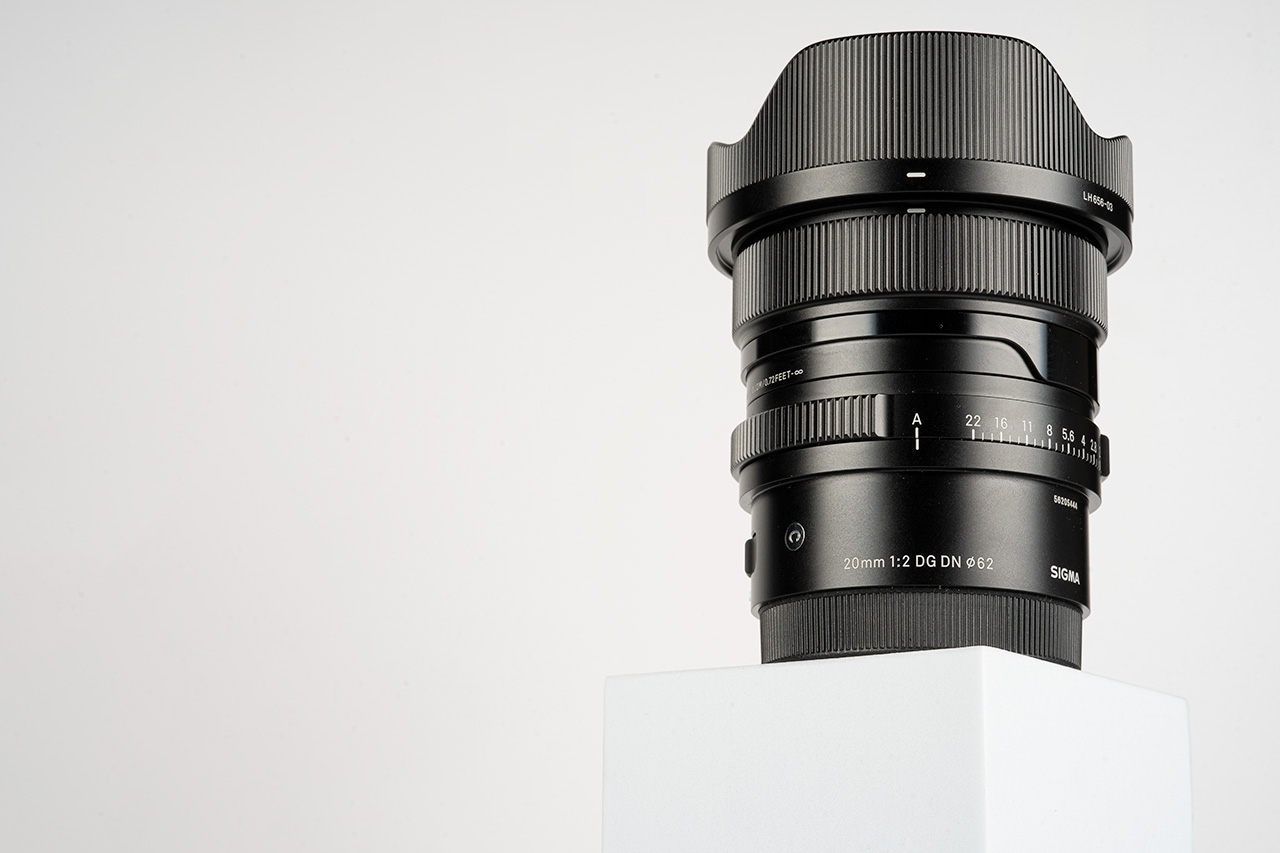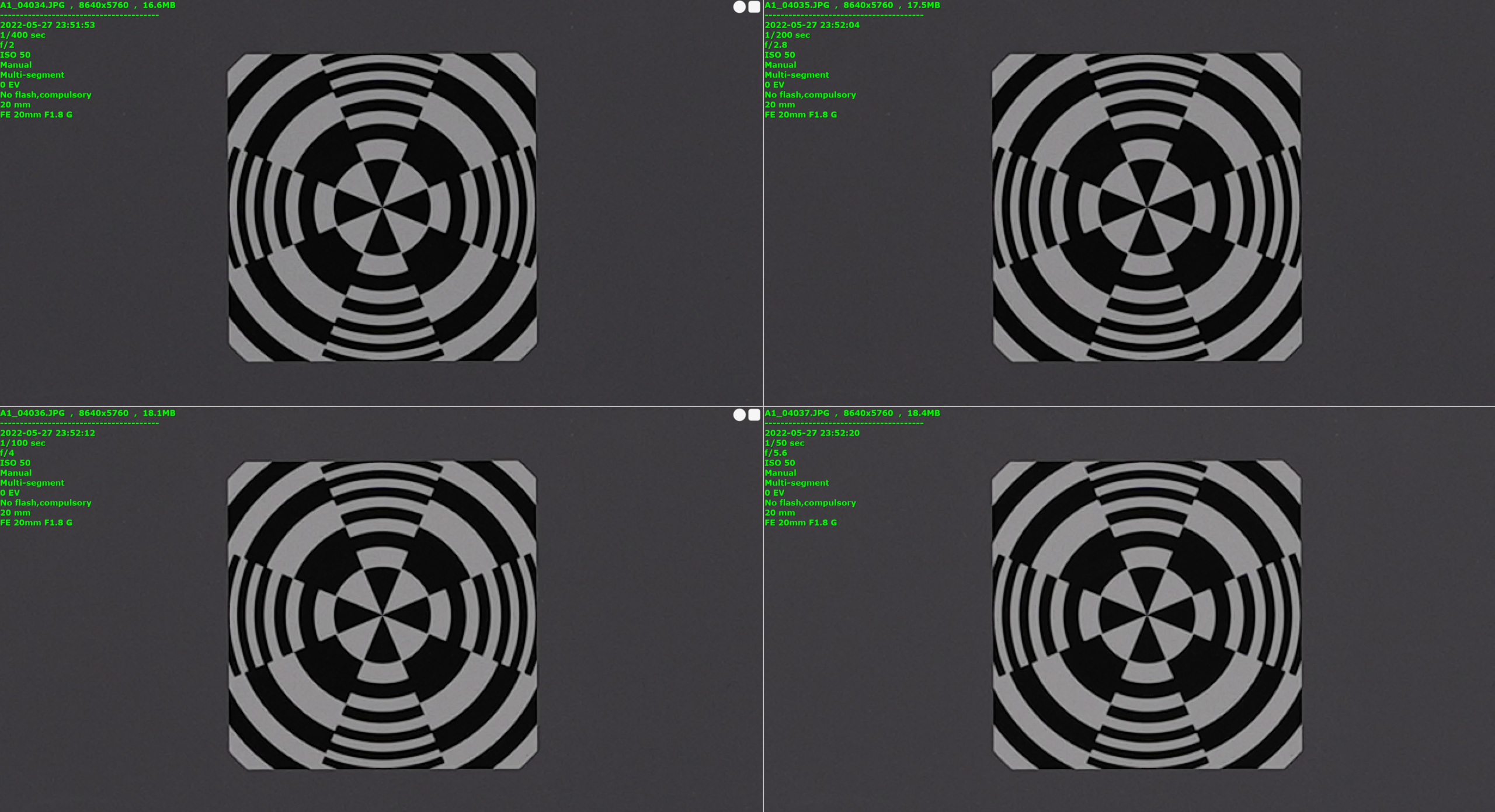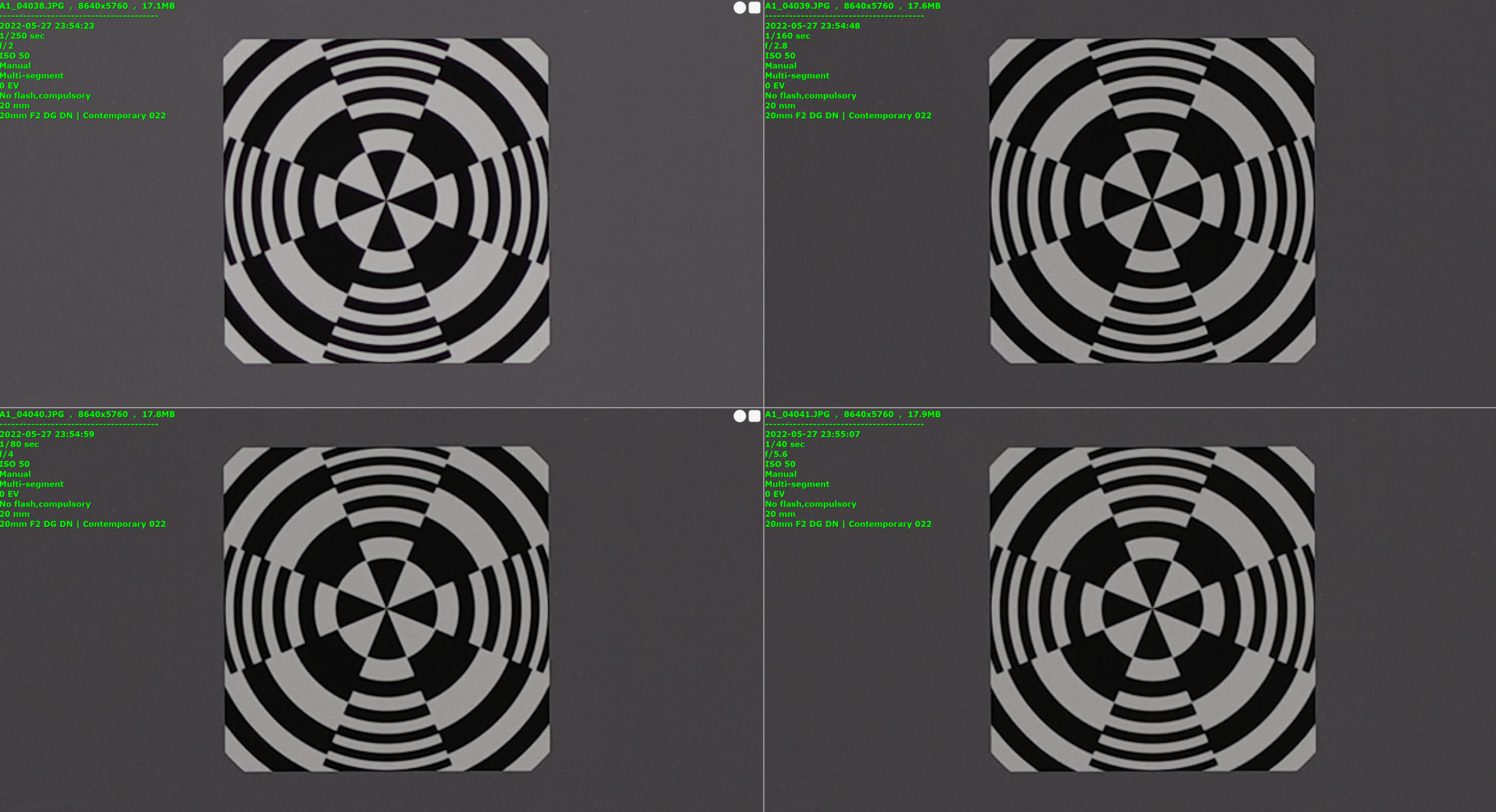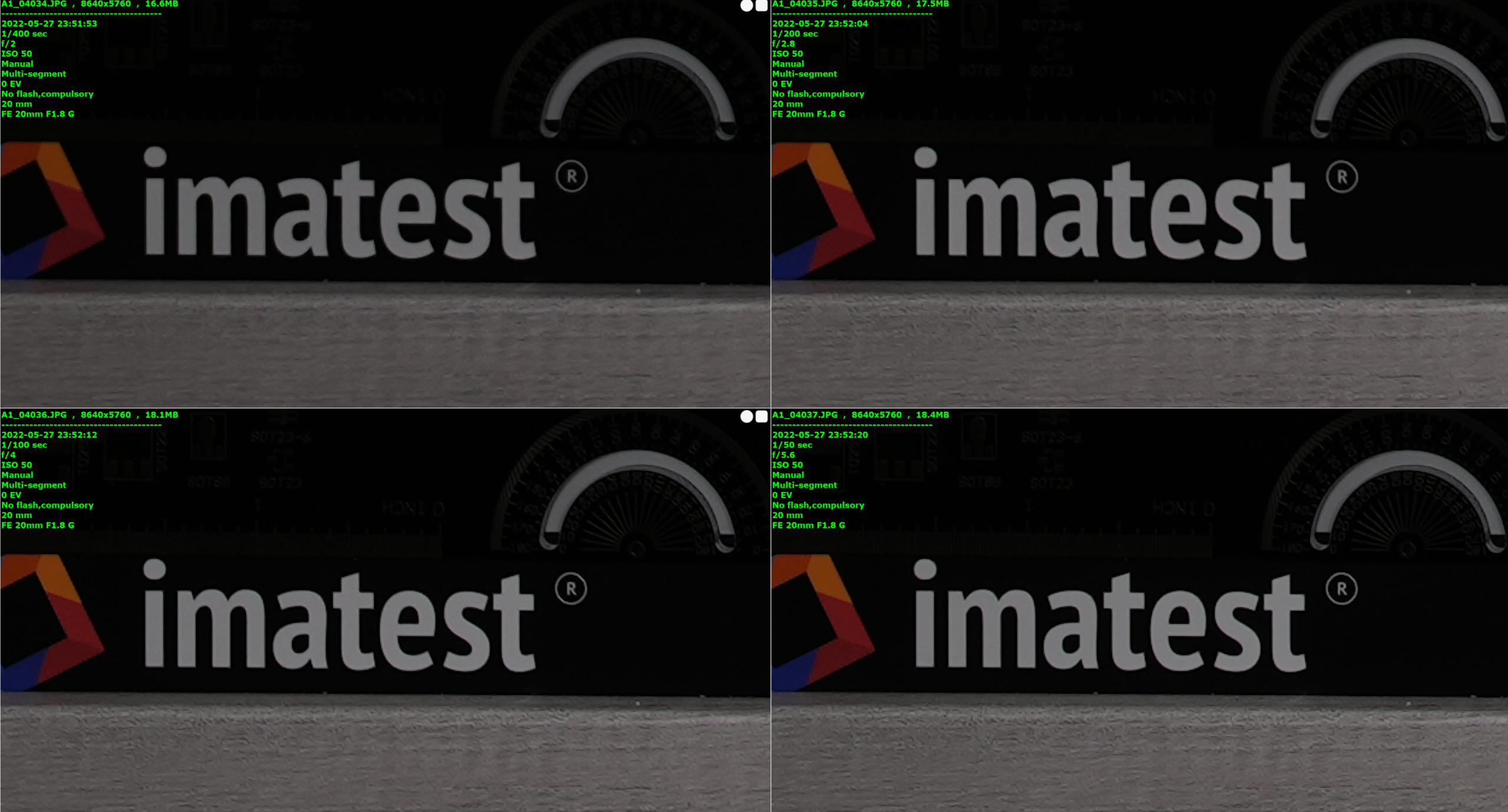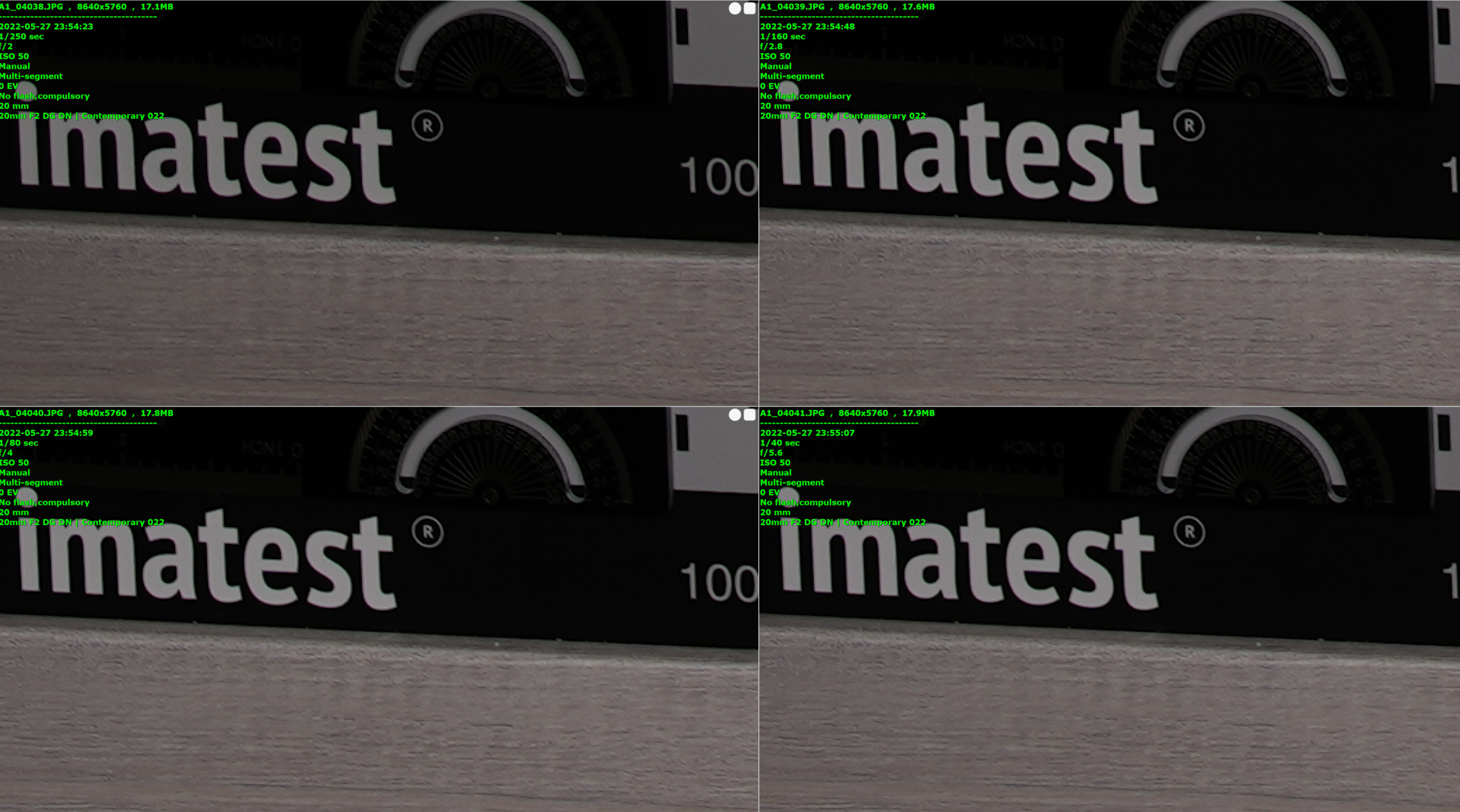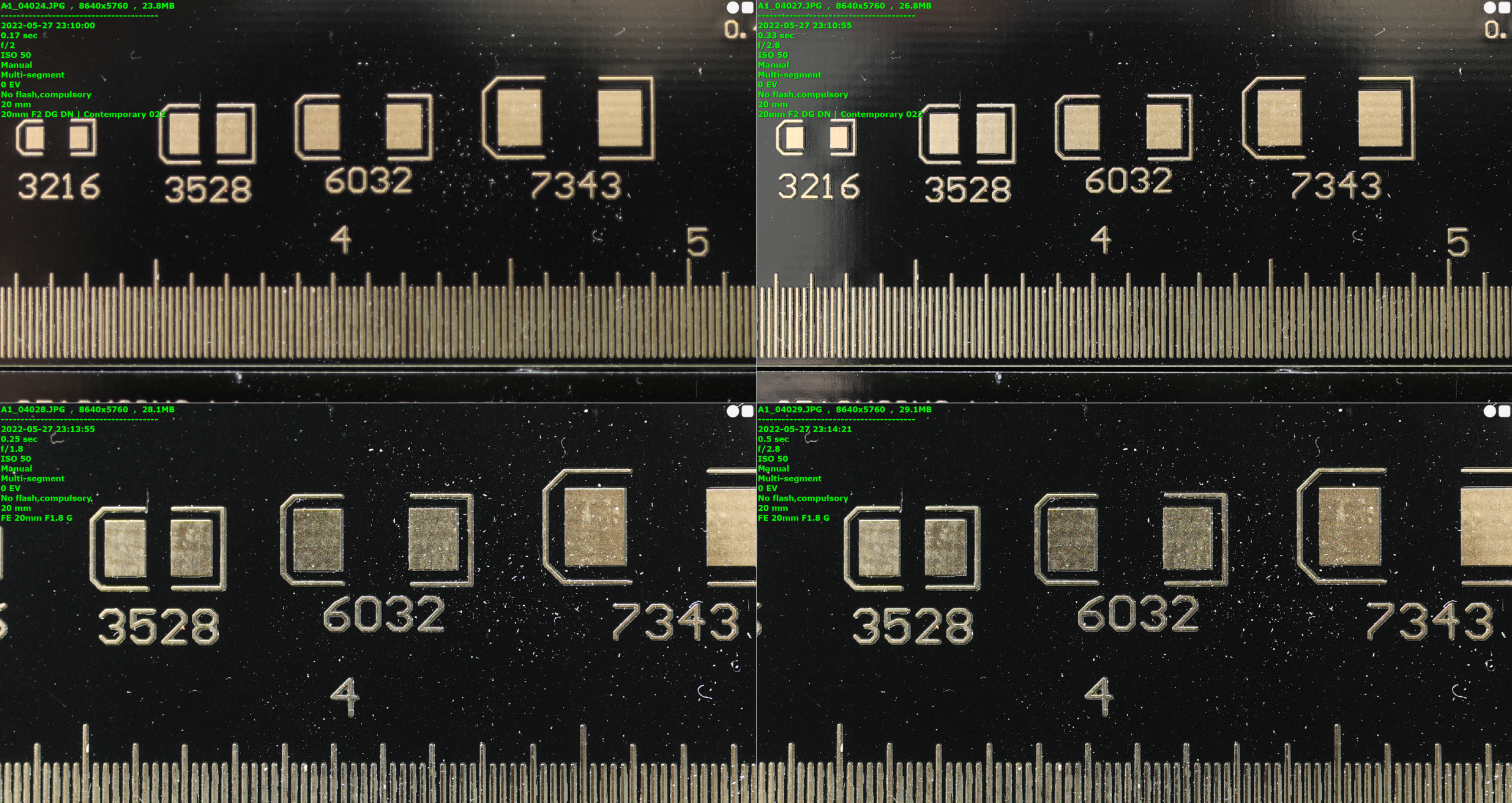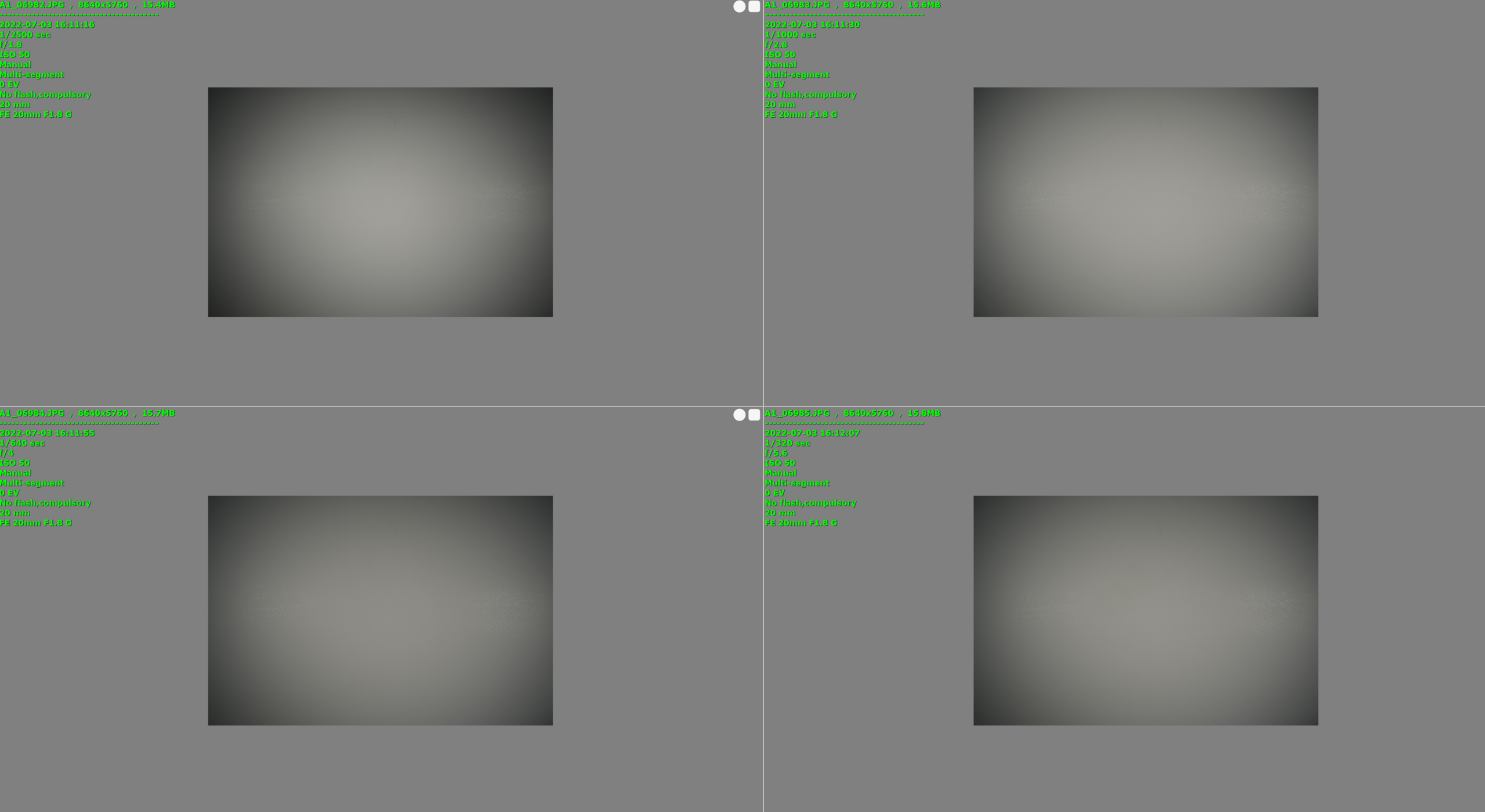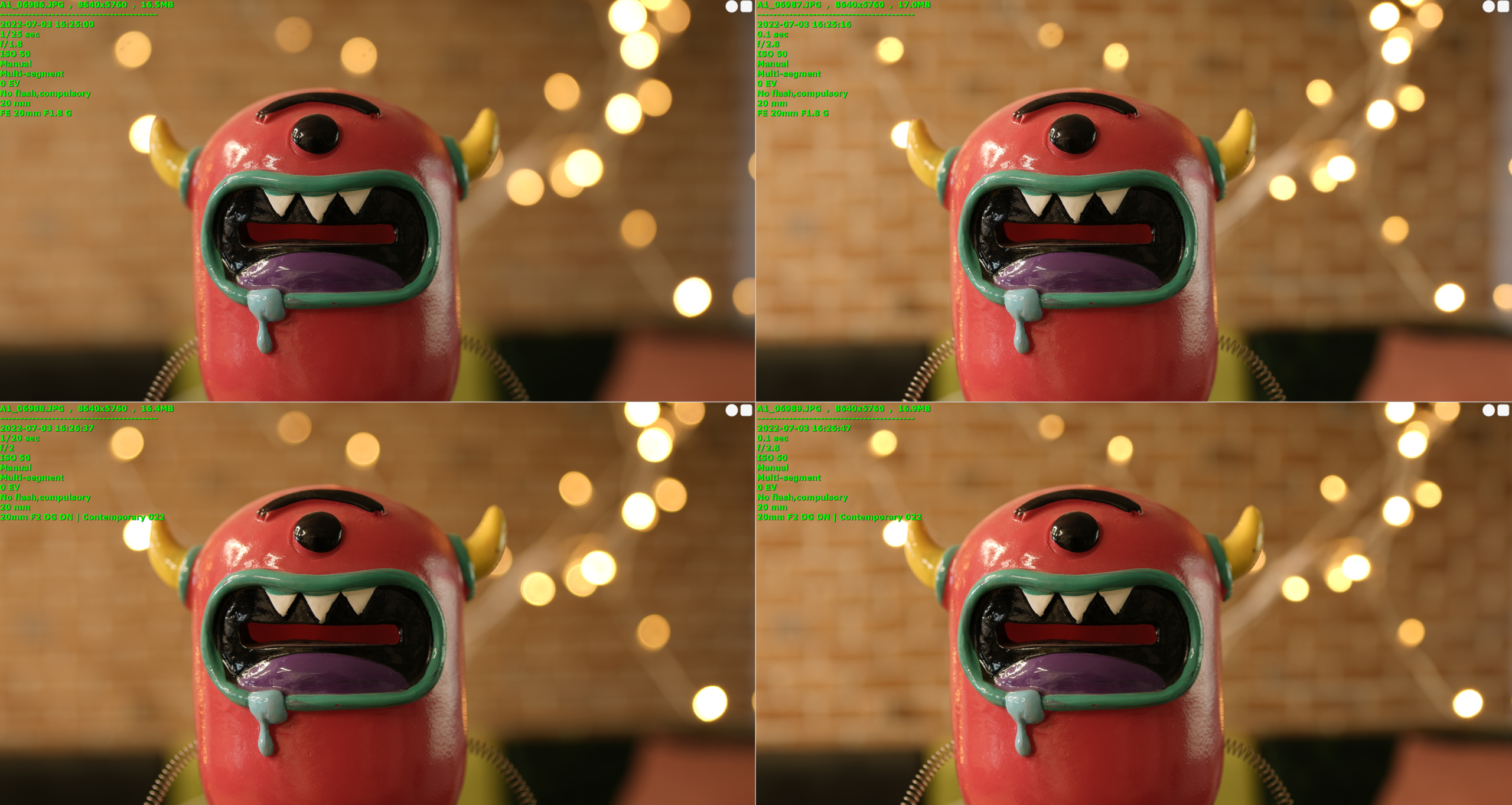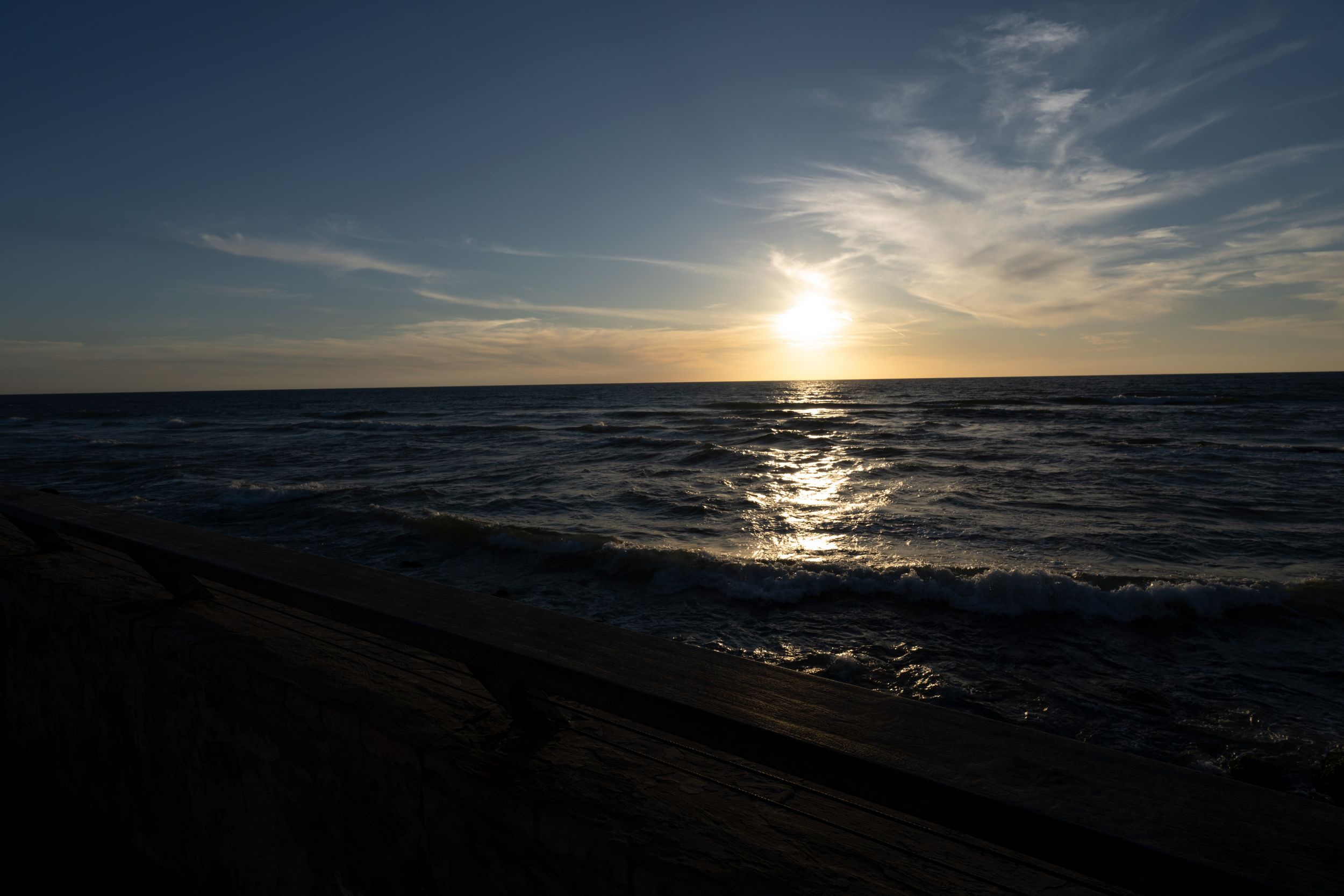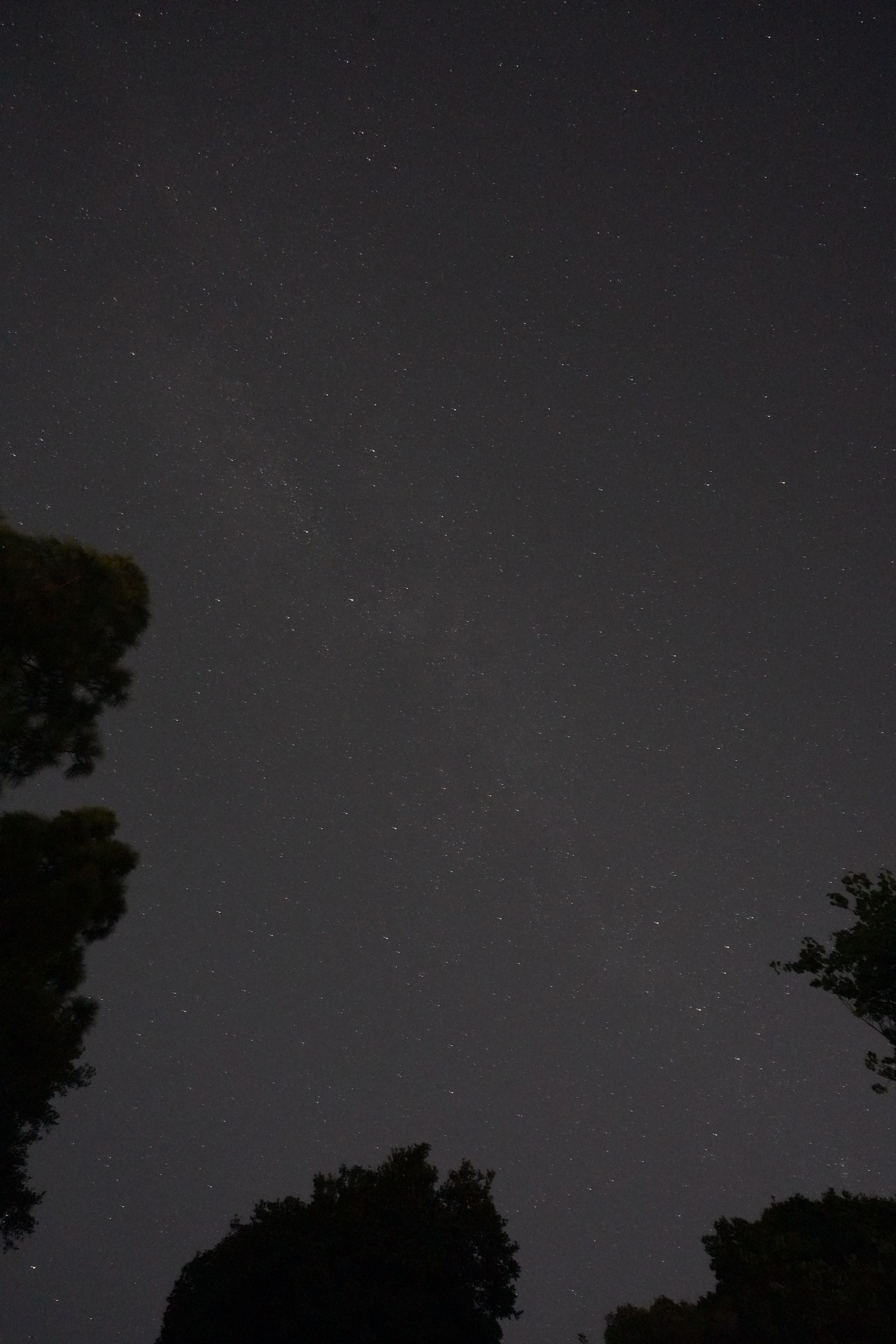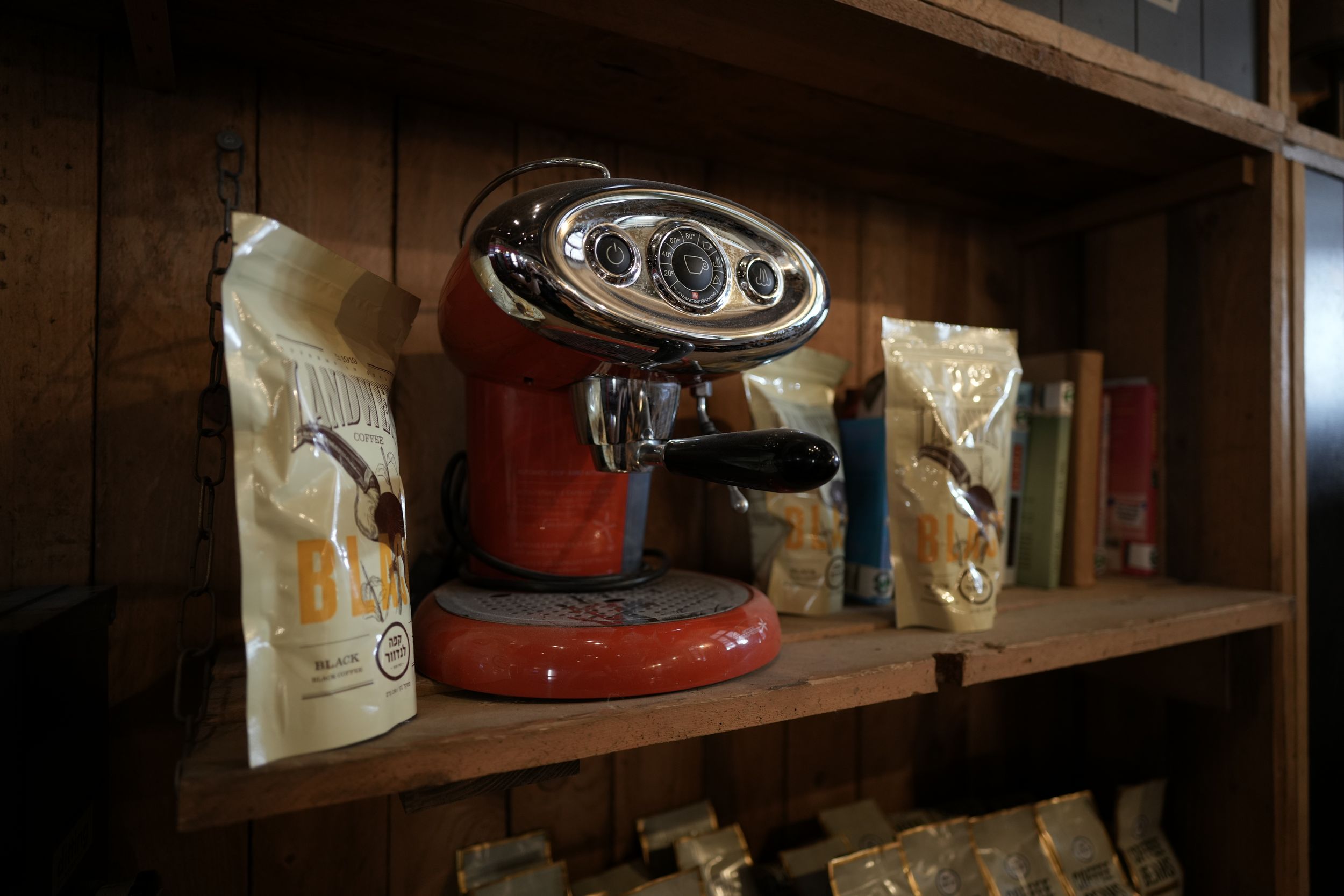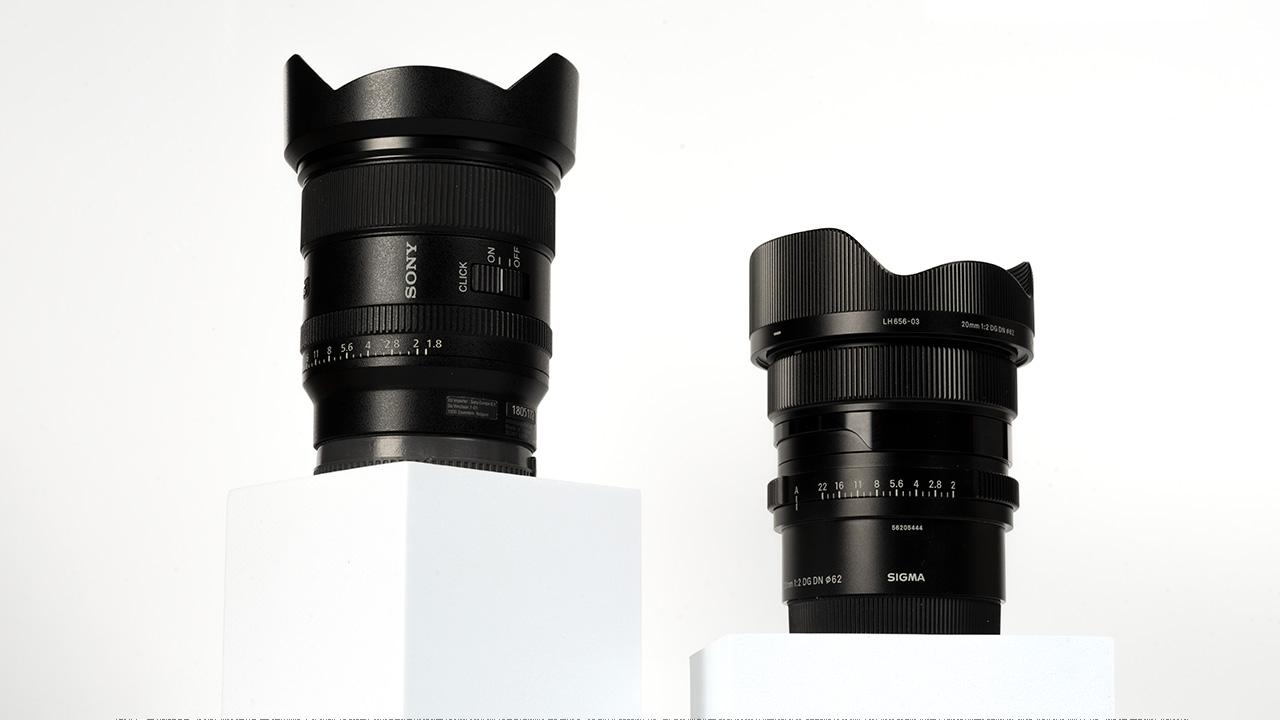Today we are testing two 20mm fast full-frame prime lenses from Sony and Sigma, The Sony FE 20mm f/1.8 G and the Sigma 20mm F2 DG DN Contemporary and see how they compare.
The Sony lens was introduced back in early 2020 and is part of the company’s G series. The Sigma was introduced two years later and is part of the company’s all-metal I-series of lenses.
Optical Design
The Sony has 14 elements in 12 groups including two advanced aspherical elements and three ED extra-low dispersion glass elements and Nano AR coating to combat flare and ghosting.
The Sigma has 13 elements in 11 groups including 1 FLD, 1 SLD, and 3 aspherical elements and it incorporates nanoporous coating to reduce flares and ghosting.
Optical design – Sony and Sigma 20mm
Materials
The Sony is made from hard composite material and certainly feels nice in the hand. The Sigma has the same all-metal design as the rest of the I series Sigma lenses which we have grown to love so much over the past three years or so.
Size and weight
The Sony weighs in at just under 402g / 14oz and is around 9cm / 3.5″ long.
The Sigma is about 417g / 14.7oz and around 8cm / 3″ long.
Lighter and longer – Sony 20mm
Rings
The Sony has two rings. A fairly wide front focus ring and a narrow aperture ring with an auto mode and a de-click option.
The Sigma also has two rings but the focus ring is a hair narrower and a little too close to the hood for our taste. The aperture ring is also pretty narrow and has an auto mode but no de-click mode and the clicks are pretty audible.
The Sigma 20mm with its metal aperture and focus rings
Buttons and switches
The Sony has an AF/MF switch and a focus hold button. On the other side of the lens, you also have a de-click switch that is lacking from the Sigma. The only thing that you can control with the Sigma other than the rings is the AF/MF switch.
Sealing
Both lenses are marketed as dust and moisture resistant with rubber gaskets at the back.
Mount
The two lenses cover a full-frame sensor and come in an E-mount version. The Sigma also has an L mount version.
Hood
The Sony has a fairly typical narrow plastic hood. The Sigma has a metal hood of about the same size but it has groves both inside and outside.
Aperture
Both lenses have 9 aperture blades. We shall see later on how they compare in this respect in our bokeh test.
Filter
The Sony has a front filter thread of 67mm while the Sigma has a smaller filter thread of 62mm.
The Sony 20mm f/1.8 with a 67mm filter
Performance
Focusing
We tested both the manual and AF of both lenses. The Sigma has much more resistance on the focus ring and is a real joy to use aside from the ring being too close to the hood. The Sony feels a bit less precise and has less resistance although the ring is wider and there is more clearing with the hood.
We also tested the focus throw of both lenses. The Sony focus is linear (you can turn the focus fast or slow but the same amount of turns will always get you a similar focus distance) with approximately 150 degrees.
The Sigma has a non-linear focus throw which might be OK for shooting stills but is less than ideal for repeatable focus pulls in video.
We performed our usual AF test in both good and poor lighting conditions and both lenses performed very well focusing in both stills and video modes with no apparent hunting even in low light on the Sony A1.
Image stabilization
Both lenses do not have image stabilization. We did a quick handheld walk test with both lenses on our A1 and if you are more stable than we are you can probably get fairly decent results with both lenses
Sharpness
We tested the sharpness of both lenses using our special large professional Imatest high-end chart on our Sony A1.
In the center of the frame, the Sony seems very sharp even wide open. The Sigma looks O.K as well although when compared side by side it is maybe not quite as sharp.
Sony center sharpness – f/2 (top left), f/2.8 (top right), f/4 (bottom left), f/5.6 (bottom right)
Sigma center sharpness – f/2 (top left), f/2.8 (top right), f/4 (bottom left), f/5.6 (bottom right)
In the corners we see a very similar image, the Sony is exceptionally sharp and the Sigma is quite sharp as well although with the in-camera corrections turned off you can clearly see very significant barrel distortion which we shall discuss later.
Sony corner sharpness – f/2 (top left), f/2.8 (top right), f/4 (bottom left), f/5.6 (bottom right)
Sigma corner sharpness – f/2 (top left), f/2.8 (top right), f/4 (bottom left), f/5.6 (bottom right)
Close up performance
In our testing, the Sony was able to focus manually as close as 17cm. The Sigma needed a little more distance at about 19.5cm. The macro magnification of both lenses tells a similar story with the Sony capable of up to 1:4.5 and the Sigma only 1:6.7.
When it comes to close-up image quality the Sony seems to be sharper in the center wide open although it is hard to say when it comes to the corners (this is especially problematic wide wide lenses that close), but you can certainly see how much closer the Sony can focus on subjects.
Close-up test – center frame – Sigma f/2 and f/2.8 (top left and right accordingly) and Sony 20mm f/1.8 and f/2.8 (bottom left and right accordingly)
Breathing
Both lenses seem to suffer from quite a lot of breathing in our test. When used on the A7 IV however you can eliminate the breathing completely using the breathing compensation feature which you can’t do with the Sigma (we are still waiting for this feature to come to the A1).
Chromatic aberrations
On our test, both lenses seem to exhibit no trace of longitudinal chromatic aberrations even wide open.
Chromatic aberrations test – Sigma f/2 and f/2.8 (top left and right accordingly) and Sony 20mm f/1.8 and f/2.8 (bottom left and right accordingly)
Flare
Both lenses exhibit quite a lot of flare. The Sony has a green glare while the Sigma has more of a green-yellow look. In both cases be very careful to point the lens anywhere near a bright light source if you don’t like this effect.
Vignette
Wide open and with the in-camera corrections turned off the Sony has a large amount of vignette which doesn’t go away completely even at f/5.6. The Sigma shows more or less the same picture so we would highly recommend that you keep those in-camera corrections turned on at all times.
Sony vignette – f/1.8 (top left), f/2.8 (top right), f/4 (bottom left), f/5.6 (bottom right)
Sigma vignette – f/2 (top left), f/2.8 (top right), f/4 (bottom left), f/5.6 (bottom right)
Barrel distortion
Looking at the difference between the Sony and the Sigma in terms of geometric distortion with the camera corrections turned off, it is really astounding. While the Sony has literally no distortion, the Sigma has a huge amount of barrel distortion which either the camera will have to correct or some post-process.
Sony (left) and Sigma (right) – geometric distortion
Bokeh
If you get close enough to your subject you can still get a little out-of-focus background with both these lenses wide open.
As for the quality of the light circles, you get nice round circles near the center, with oval-shaped ones as you get further away with both lenses. On both lenses, the circles are not really clean and for the most part, look very similar.
Bokeh test – Sony f/1.8 and f/2.8 (top left and right accordingly) and Sigma 20mm f/2 and f/2.8 (bottom left and right accordingly)
Sample images
We shot with our personal copy of the Sony 20mm lens and our review sample of the Simga 20mm lens a large number of shots over several months mostly with the Sony A1 and you can see some of the results here:
Sony 20mm sample shots (using Sony A1 and Sony A7R IV) – no editing, only cropping/resizing
Sigme 20mm sample shots (using Sony A1) – no editing, only cropping/resizing
Conclusion
Based on our testing the Sony lens is hands down the better lens out of these two. With that said the Sigma is still a very capable lens especially closed down a little and so it boils down to how much you are willing to spend for that extra performance (and a few unique features).
Which lens to choose?
Pricing
Talking about the pricing, the Sony FE 20mm F1.8 G sells for around $900 while the Sigma sells for around $700.
You can check out more LensVid exclusive articles and reviews on the following link.

You can support LensVid by shopping with our affiliate partners
Affiliates: Amazon, B&H, Adorama and E-bay.
Why should you trust us?